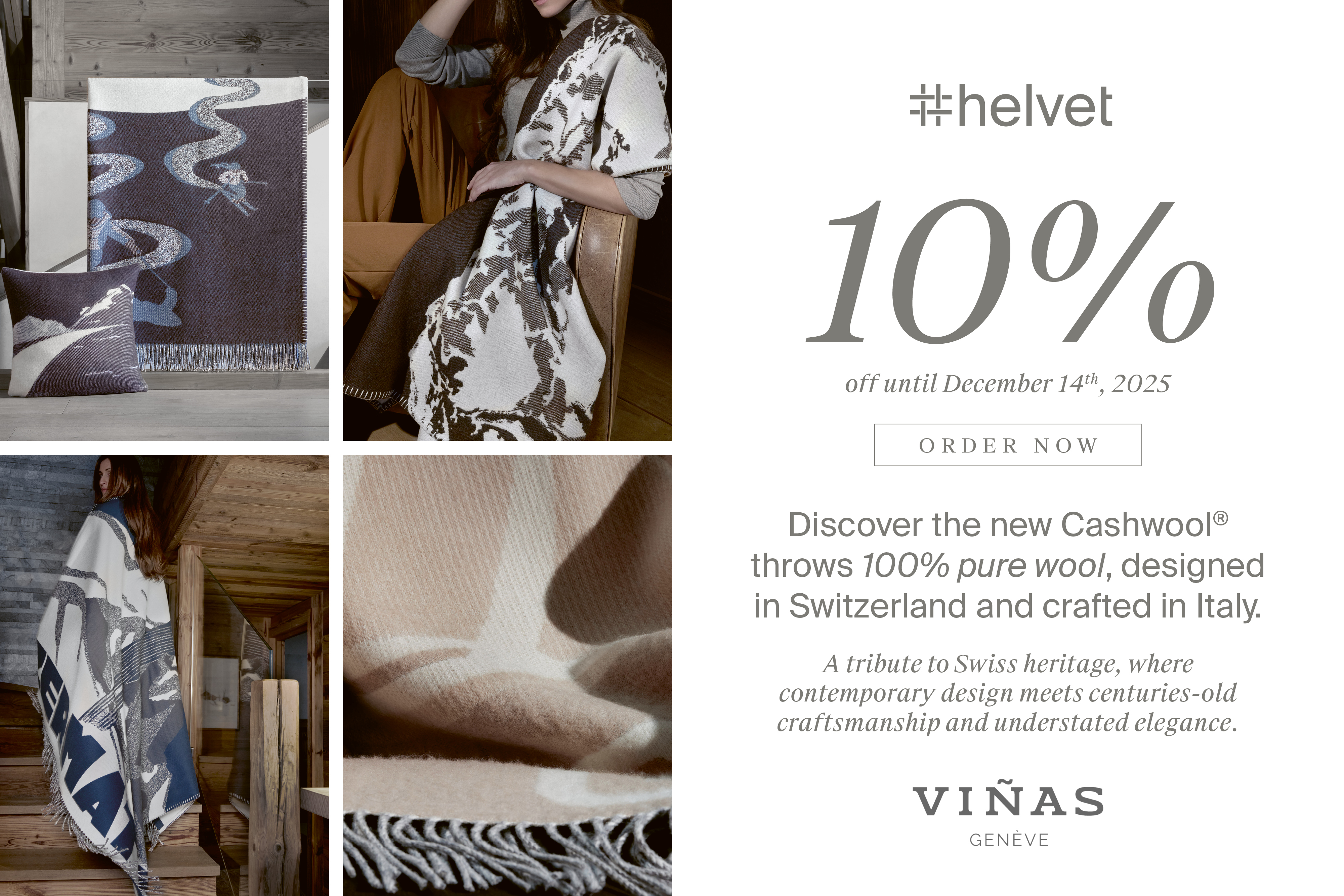
Interview with Nicolas Féraud
President of Crans-Montana
Crans-Montana Council President Nicolas Féraud is privy to a truly unique perspective on the high plateau’s economy, tourism, culture, and sports — all of which play a crucial role in local development. He sat down with helvet for an interview to share his experiences…
Nicolas Féraud, what is so special about Crans-Montana?
Crans-Montana offers all the services of a city and the joy of having nature at one’s front door. That is all thanks to the region’s vast natural area, which goes from 1,500 to 3,000 m in altitude and is bathed in sunlight almost all year-round. We have lakes, three golf courses, a large network of hiking and biking trails, as well as truly exceptional views! All this combined means the resort encompasses both urban lifestyles and natural environments, complimented by rich cultural offerings, international sporting events and, of course, a multitude of leisure activities like skiing and golfing to name just a few.
What are some of the high plateau’s greatest economic issues?
The Intercommunal Strategy and Development Plan developed by the ACM defines our vision from now through 2030. Tourism is our primary driver and is essential to our reputation, but one of our goals is to move past the one-track vision that has guided this area since the start of the 19th century. Starting in 2018, we observed that education resulted in the greatest gross added value, followed by wellness, retail trade and real estate business.
Today, Crans-Montana boasts an economic profile that’s on par with a small city — a mountain city specifically. We’re hoping to attract year-round inhabitants, which requires creating jobs that are not tied to seasonal tourism. Seasonal tourism is, however, fundamental, and gets relatively even support from public bodies in both summer and winter, along with an annual investment of two million francs to finance some 90 local events. It’s a virtuous cycle because tourism requires infrastructure for activities and wellness to be effective, which helps make this region attractive to residents, and the more attractive an area is year-round, the more likely it is that it will appeal to tourists.
What are Crans-Montana’s primary markets when it comes to tourism?
Our clientele is 80% Swiss. Italy, France, Germany, Benelux and the United Kingdom are our most important foreign markets, but there’s also lots of potential from the Americas and the Middle East.What are some of the mid-to-long-term goals for Crans-Montana? As outlined in the Intercommunal Strategy and Development Plan, we want to make this region “a national and international beacon for wellness and development (economic, social, and natural) that is sustainable, harmonious and coordinated”. We are working to develop growing, countercyclical sectors that have strong potential, like health, education (we have multiple international schools here) and technology. For the past few years, our economic delegates have also been soliciting well beyond our borders, encouraging companies to move here, which would create jobs and favour local business. That’s been the case for start-ups as well as for big hotel industry groups.
Socially, our role is to reorganize and expand public services so that they correspond with our growth, particularly in regard to water management and distribution, which is a big issue. We’re also developing and modernizing the related infrastructure. In parallel, we created the “Crans-Montana’s Commitment” programme to raise awareness and offer courses and activities about preserving biodiversity. We have vast amounts of potential for developing renewable energy through solar and the wood from our forests. We’re trying to prioritize public transportation, especially the recently renovated funicular that connects Crans-Montana and Sierre in just 13 minutes. We’re also supporting the creation of short supply chains that emphasize the use of local products.
What does the arrival of Vail Resorts mean for Crans-Montana?
In addition to the investment (30 million) that’s already been announced, Vail Resorts brings a high level of professionalism and new energy to our ski resort, which will have a positive impact on the entire region’s economic structure. The American group has a very clear long-term strategy. The Epic Pass opens a whole new market for us, giving us access to the 2.2 million pass holders. That also offers Crans-Montana a lot of visibility and is an undeniable marketing advantage.
Any big future plans you can share with us?
Right now, our biggest project is preparing for the Championships and developing the finish area’s stadium — that’s a multifaceted project, which will be useful in summer as well as in winter. Then there are, of course, some of our more crazy ideas, like the cable car connection over the Plaine Morte Glacier to Adelboden-Lenk, in the canton of Bern.


















